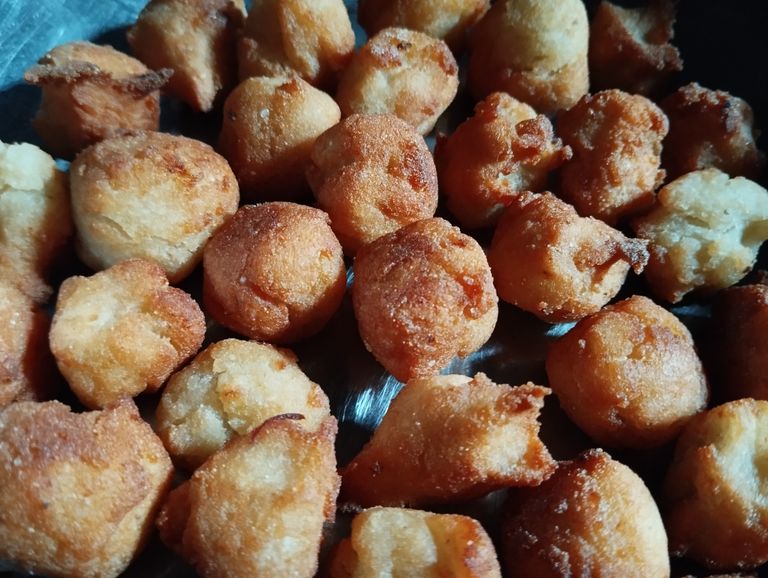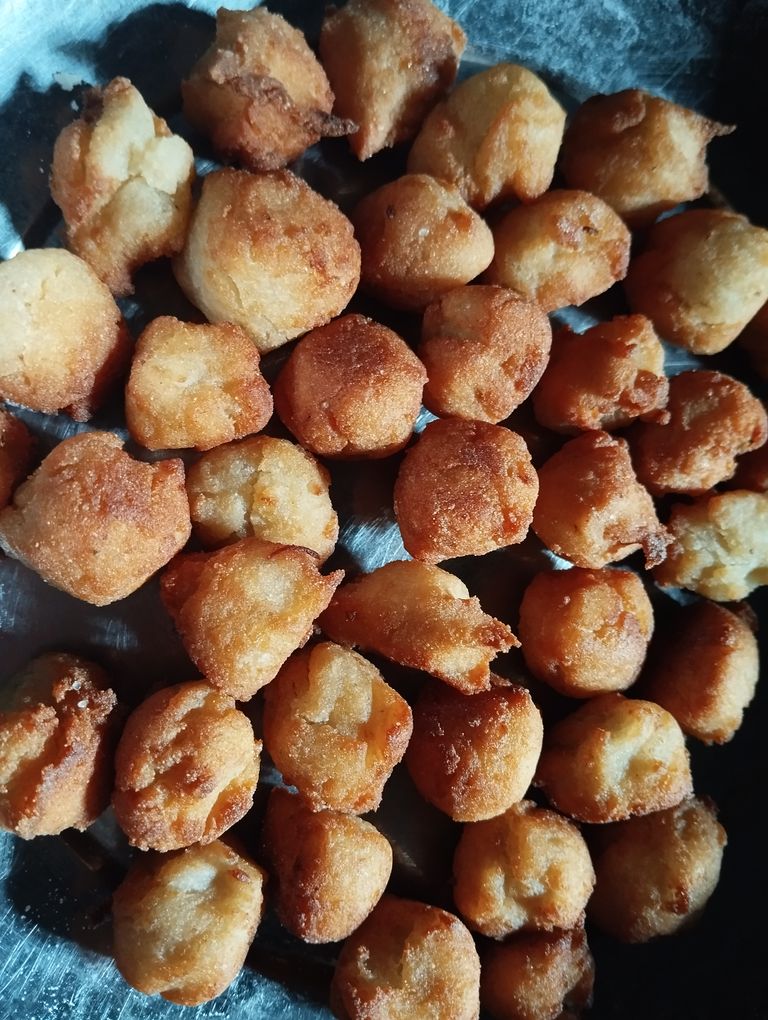
How to Make Ripe Banana Fritters A Delicious and Easy Recipe.
Ripe banana fritters, commonly known as "kolar bora" in Bengali cuisine, are a delightful treat that combines the sweetness of bananas with a crispy exterior. This quick and easy snack is perfect for tea time, festivals, or even as a dessert. Here’s a step-by-step guide to making these mouthwatering fritters at home.
Ingredients
To make ripe banana fritters, you’ll need the following:
Ripe bananas: 3-4 medium-sized (preferably overripe for maximum sweetness)
All-purpose flour (maida): 1 cup
Rice flour: 2 tablespoons (for extra crispiness)
Sugar: 2-3 tablespoons (adjust according to taste)
Grated coconut: 2 tablespoons (optional, for added texture)
Semolina (suji): 2 tablespoons (optional, for crispiness)
Baking soda: A pinch (for a light and airy texture)
Cardamom powder: 1/4 teaspoon (for a fragrant touch)
Salt: A pinch
Oil: For deep frying
Step-by-Step Instructions
- Prepare the Banana Mixture
Peel the ripe bananas and mash them thoroughly in a mixing bowl. You can use a fork or your hands to achieve a smooth, lump-free consistency.
Add sugar to the mashed bananas and mix well until the sugar dissolves.
- Combine the Dry Ingredients
In a separate bowl, sift together the all-purpose flour, rice flour, semolina, baking soda, and a pinch of salt.
Gradually add the dry mixture to the mashed bananas while stirring continuously to form a thick batter.
Mix in the grated coconut and cardamom powder for added flavor. The batter should have a dropping consistency—neither too thick nor too runny.
- Heat the Oil
Heat oil in a deep frying pan over medium heat. To check if the oil is ready, drop a small amount of batter into the oil. If it sizzles and rises to the surface, the oil is ready.
- Fry the Fritters
Using a spoon or your hands, scoop small portions of the batter and gently drop them into the hot oil. Be careful not to overcrowd the pan.
Fry the fritters in batches, turning them occasionally to ensure they cook evenly on all sides.
Once the fritters turn golden brown, remove them from the oil and place them on a plate lined with paper towels to drain excess oil.
Serving Suggestions
Serve the banana fritters warm with a cup of tea or coffee.
Drizzle honey or sprinkle powdered sugar on top for an extra sweet touch.
Pair them with a side of whipped cream or a scoop of vanilla ice cream for a gourmet dessert experience.
Tips for Perfect Banana Fritters
- Use overripe bananas: The sweeter and softer the bananas, the better the flavor and texture of the fritters.
- Adjust sweetness: Depending on the ripeness of your bananas, you can adjust the amount of sugar in the batter.
- Add variety: For a unique twist, you can add chopped nuts or raisins to the batter.
- Keep the oil temperature consistent: If the oil is too hot, the fritters may brown too quickly on the outside while remaining undercooked inside.
Why You’ll Love This Recipe
Simple Ingredients: Made with pantry staples.
Quick Preparation: Ready in under 30 minutes.
Versatile: Works as a snack, dessert, or even a breakfast treat.
Customizable: You can tweak the recipe with additional flavors like cinnamon, nutmeg, or chocolate chips.
Ripe banana fritters are a classic recipe that’s beloved for their comforting taste and nostalgic charm. Whether you’re recreating childhood memories or trying them for the first time, this recipe is sure to become a favorite in your kitchen.
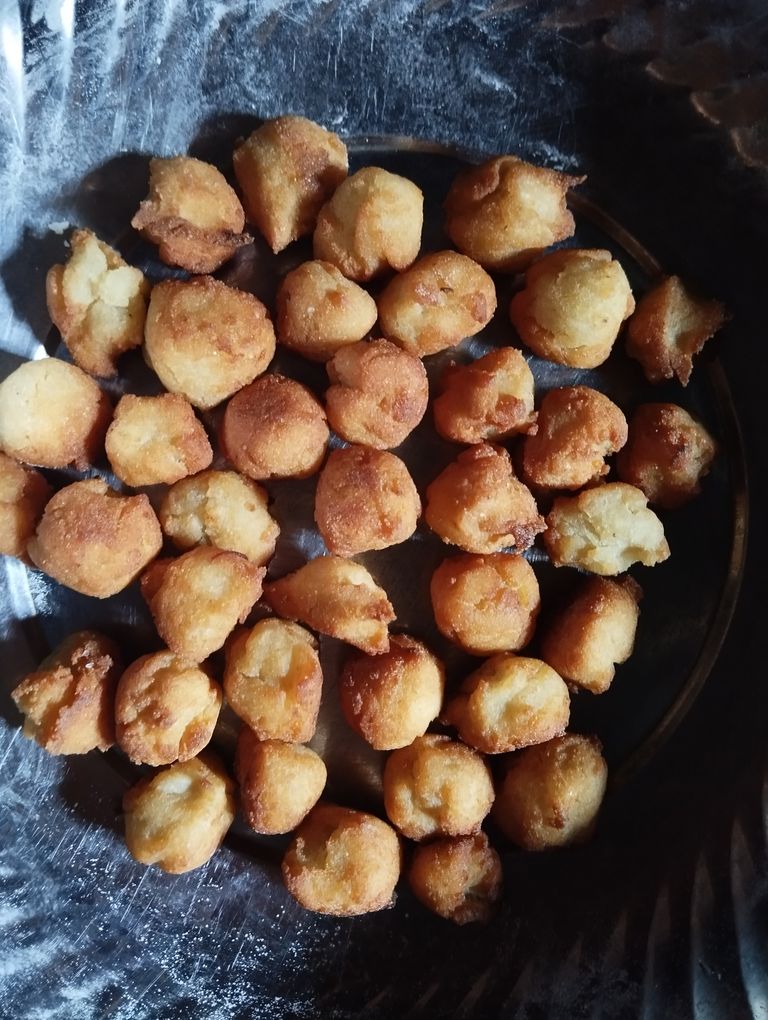
The Benefits of Eating Ripe Bananas
Ripe bananas are a nutritional powerhouse, offering numerous health benefits for people of all ages. Packed with essential vitamins, minerals, and natural sugars, bananas are one of the most popular fruits worldwide. In this blog, we will explore the incredible advantages of consuming ripe bananas and how they can enhance your overall health and well-being.
- Rich in Nutrients
Ripe bananas are an excellent source of essential nutrients, including:
Potassium: Helps regulate blood pressure and supports heart health.
Vitamin C: Boosts the immune system and protects the body from free radical damage.
Vitamin B6: Enhances brain function and red blood cell production.
Magnesium: Supports muscle function and helps maintain a steady heartbeat.
Dietary Fiber: Promotes digestive health and keeps you feeling full.
- Boosts Digestive Health
Bananas are a great remedy for digestive issues. The natural fibers in ripe bananas, especially pectin, help regulate bowel movements and prevent constipation. The soft texture of ripe bananas makes them gentle on the stomach, making them an ideal food for people with ulcers or sensitive stomachs.
- Instant Energy Source
Ripe bananas contain natural sugars such as glucose, fructose, and sucrose, which provide a quick energy boost. This makes them a perfect snack for athletes, students, or anyone needing a pick-me-up during the day. Eating a ripe banana before a workout can improve endurance and prevent fatigue.
- Promotes Heart Health
The high potassium content in ripe bananas helps control blood pressure by counteracting the effects of sodium. Additionally, the fiber and antioxidants present in bananas reduce the risk of heart disease by lowering cholesterol levels and improving overall heart function.
- Enhances Mood and Reduces Stress
Bananas contain tryptophan, an amino acid that the body converts into serotonin, often referred to as the "feel-good" hormone. This helps improve mood, reduce anxiety, and combat depression. The vitamin B6 in bananas also plays a crucial role in regulating neurotransmitters and promoting mental well-being.
- Supports Weight Management
Despite being sweet, ripe bananas are low in calories and fat. Their natural sugars provide a satisfying sweetness, curbing the craving for unhealthy snacks. The fiber content in bananas promotes satiety, helping you feel full longer and preventing overeating.
- Improves Skin Health
The antioxidants and vitamins in ripe bananas contribute to healthy, glowing skin. Vitamin C helps in collagen production, which maintains skin elasticity and reduces signs of aging. You can also use mashed ripe bananas as a natural face mask to hydrate and rejuvenate your skin.
- Aids in Muscle Recovery
Bananas are a popular post-workout snack for a good reason. Their high potassium and magnesium content helps reduce muscle cramps and promotes faster recovery after physical activity. Athletes often rely on bananas to replenish lost electrolytes and energy.
- Regulates Blood Sugar Levels
Although bananas are sweet, their glycemic index is moderate, meaning they don’t cause a rapid spike in blood sugar levels. The fiber in bananas helps slow down sugar absorption, making them a good choice for people with diabetes when consumed in moderation.
- Strengthens Immunity
Ripe bananas are rich in antioxidants, which help protect the body from harmful free radicals and strengthen the immune system. Regular consumption of bananas can reduce the risk of illnesses and improve overall health.
How to Include Ripe Bananas in Your Diet
As a Snack: Enjoy ripe bananas on their own for a quick and healthy snack.
In Smoothies: Blend bananas with yogurt, milk, or other fruits for a nutritious drink.
In Desserts: Use bananas in baking recipes like banana bread, pancakes, or muffins.
As a Topping: Add sliced bananas to oatmeal, cereal, or yogurt for a tasty breakfast.
Ripe bananas are not just delicious; they are also incredibly beneficial for your health. Whether you're looking to boost your energy, improve digestion, or enhance your overall well-being, bananas are a versatile and convenient choice. Incorporate this superfruit into your daily diet and reap the rewards of its natural goodness.
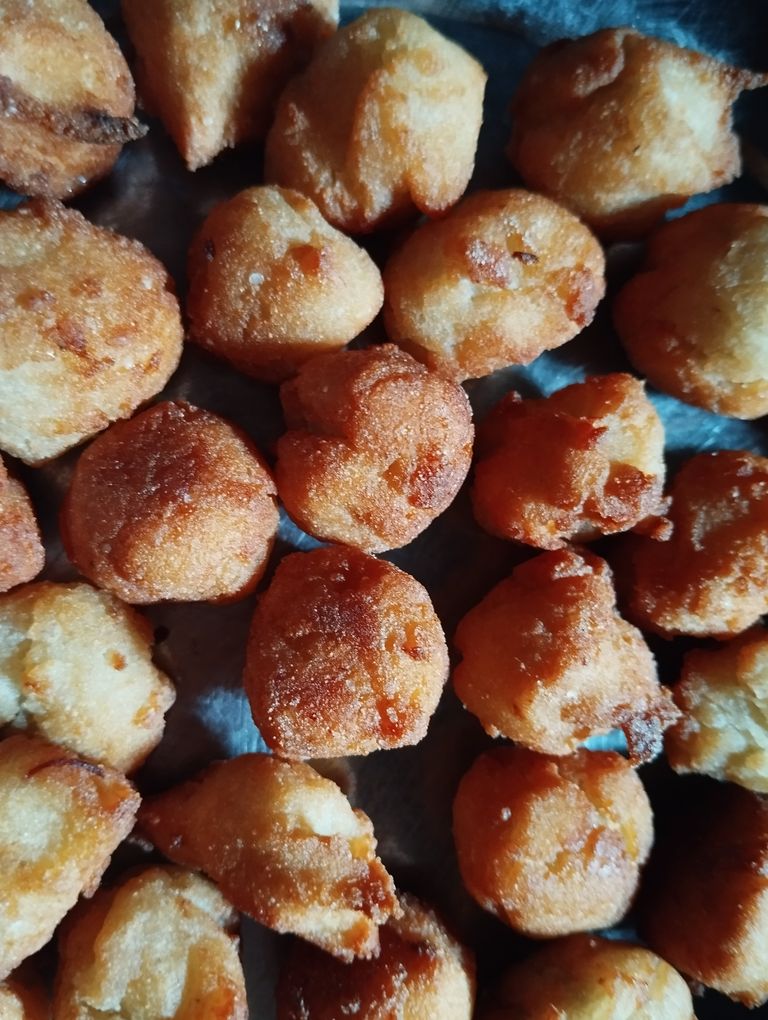
How to Ripen Raw Bananas: A Complete Guide
Bananas are one of the most popular fruits worldwide, known for their natural sweetness and versatility. Sometimes, we buy raw bananas, either by mistake or for cooking purposes, but later wish to ripen them for eating. Fortunately, raw bananas can be ripened at home using simple methods. In this blog, we’ll explore effective and natural ways to ripen bananas quickly and safely.
Why Ripen Raw Bananas?
Raw bananas are firm and have a starchy taste, which makes them unsuitable for direct consumption. As bananas ripen, the starch converts into sugar, giving the fruit its characteristic sweetness and soft texture. Ripe bananas are perfect for eating, making desserts, or smoothies.
Natural Ways to Ripen Bananas
- Ripen Bananas in a Paper Bag
One of the easiest and most effective ways to ripen bananas is by placing them in a paper bag. Bananas release ethylene gas, a natural plant hormone that accelerates the ripening process.
Steps:
Take a paper bag and put the bananas inside.
For faster results, add an apple or a ripe banana to the bag. The additional fruit releases more ethylene gas.
Close the bag loosely and leave it at room temperature.
Check after 24-48 hours; the bananas should be ripe.
- Use Rice or Wheat Flour
In some cultures, rice or wheat flour is used to ripen fruits naturally. This method works well for bananas.
Steps:
Take a container and fill it with uncooked rice or wheat flour.
Bury the raw bananas completely in the rice or flour.
Keep the container at room temperature for 1-2 days.
The bananas will ripen due to the trapped ethylene gas.
- Ripen Bananas in the Sun
Sunlight is a natural ripening agent that helps speed up the process.
Steps:
Place the raw bananas in a sunny spot.
Turn them occasionally to ensure even ripening.
After a day or two, the bananas will soften and turn yellow.
- Ripen Bananas in the Oven
If you’re in a hurry, you can use an oven to ripen bananas quickly.
Steps:
Preheat the oven to 150°F (65°C).
Place the raw bananas on a baking tray lined with parchment paper.
Bake for 15-20 minutes or until the skin turns black.
Let the bananas cool before peeling. They will be soft and sweet.
- Ripen Bananas in the Microwave
Another quick method is using a microwave to ripen bananas instantly.
Steps:
Pierce the banana skin several times with a fork to release steam.
Place the banana on a microwave-safe plate.
Heat on high for 30 seconds to 1 minute.
Let it cool before consuming.
Tips for Better Ripening
Always choose green bananas that are firm and free from bruises for ripening.
Avoid refrigerating raw bananas, as cold temperatures can halt the ripening process.
Once bananas are ripe, store them in the refrigerator to slow further ripening. The skin may turn black, but the fruit inside will remain fresh.
When to Use Ripe Bananas
Ripe bananas are versatile and can be used in various dishes. Here are some ideas:
Smoothies: Blend ripe bananas with milk or yogurt for a creamy drink.
Baking: Use them in banana bread, muffins, or pancakes.
Desserts: Add them to custards, puddings, or as a topping for ice cream.
Snacks: Slice and eat them with peanut butter or honey.
Ripening raw bananas at home is simple and doesn’t require any chemicals. Whether you prefer natural methods like using a paper bag or quick techniques like microwaving, these methods ensure that you enjoy sweet and delicious bananas in no time. Try these tips the next time you find yourself with raw bananas.
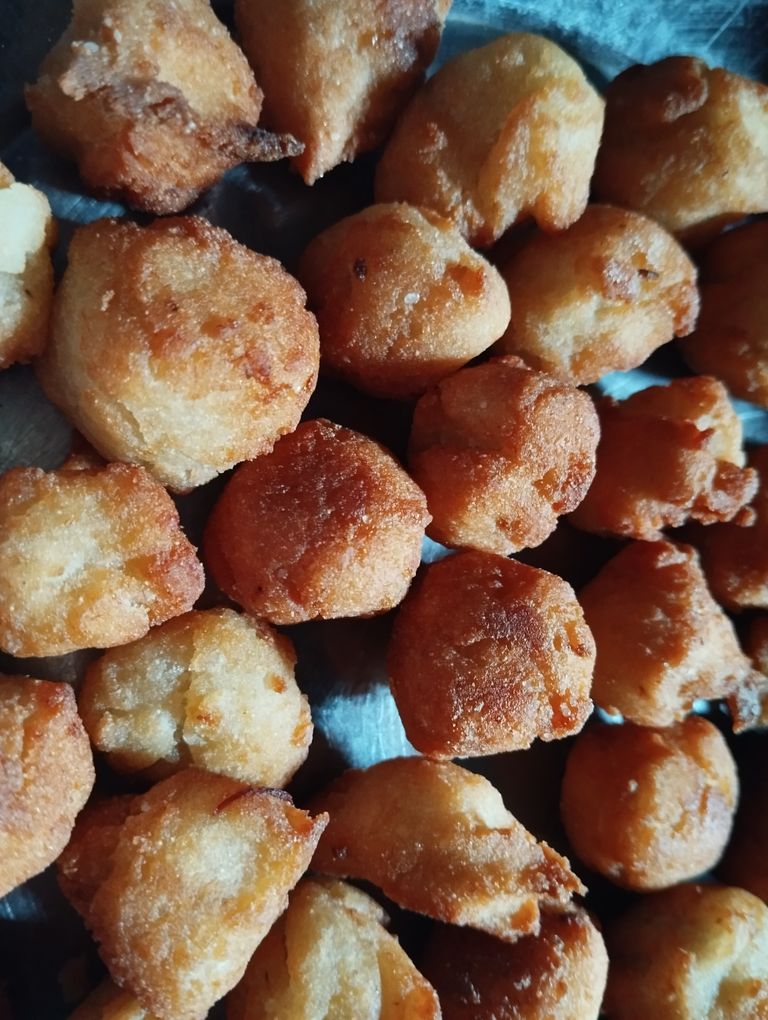
Banana Cultivation Process: A Comprehensive Guide
Banana cultivation is a highly profitable agricultural practice due to the high demand for bananas as a staple fruit worldwide. They are easy to grow, thrive in tropical and subtropical climates, and provide farmers with good yields when cultivated properly. This blog provides a step-by-step guide to growing bananas successfully.
- Climate and Soil Requirements
Bananas grow best in warm, humid climates with temperatures ranging from 15°C to 35°C. They require at least 1000-2500 mm of annual rainfall, distributed evenly throughout the year.
Soil:
Ideal Soil: Fertile, well-drained loamy soil with good organic content.
pH Range: 6.0 to 7.5.
Avoid waterlogged areas, as banana plants are susceptible to root rot.
- Varieties of Bananas
Choose a banana variety based on market demand and climate conditions. Popular varieties include:
Dwarf Cavendish: Commonly grown for commercial purposes.
Robusta: High yield and resistant to diseases.
Grand Naine: Suitable for export markets.
Red Banana: Premium variety with unique color and flavor.
- Planting Material
Bananas are propagated using:
Suckers: Small shoots that grow at the base of the parent plant. Select disease-free suckers weighing 500-750 grams.
Tissue Culture Plants: These are uniform and disease-free, ensuring higher yields.
Land Preparation
Clearing and Leveling: Remove weeds and debris. Level the land to avoid water stagnation.
- Plowing: Plow the land 2-3 times to loosen the soil.
- Pitting: Dig pits of size 45 cm x 45 cm x 45 cm. Keep a spacing of 1.8m x 1.8m for tall varieties and 1.2m x 1.2m for dwarf varieties.
- Fertilization: Fill the pits with a mixture of topsoil, compost, and fertilizers (e.g., 10 kg FYM, 200 g superphosphate per pit).
- Planting Process
Plant suckers or tissue culture plants during the onset of the rainy season.
Place the plant upright in the pit, cover with soil, and press lightly to remove air pockets.
Water the plants immediately after planting.
- Irrigation Management
Bananas require consistent moisture. Implement the following irrigation practices:
Frequency: Water every 2-3 days in summer and once a week in winter.
Drip Irrigation: Highly recommended for efficient water use and uniform moisture distribution.
Avoid over-irrigation, as it may lead to root diseases.
- Nutrient Management
Bananas are heavy feeders and require a balanced supply of nutrients.
Fertilizer Application:
- Organic Manure: Apply 20-25 kg farmyard manure (FYM) per plant annually.
- Chemical Fertilizers: Apply 200g Nitrogen (N), 60g Phosphorus (P), and 300g Potassium (K) per plant in split doses.
- Weed Control
Regularly remove weeds to prevent competition for nutrients and water. Use mulching with dry leaves or plastic sheets to suppress weed growth and retain soil moisture.
- Plant Protection
Bananas are vulnerable to pests and diseases, which can significantly affect yield.
Common Pests:
Banana Weevil: Damages roots and stems. Use traps and insecticides.
Nematodes: Cause root knots. Apply neem cake or nematicides.
Common Diseases:
Panama Wilt: A soil-borne fungal disease. Grow resistant varieties.
Sigatoka Leaf Spot: Affects leaves. Spray fungicides regularly.
- Propping and Pruning
Propping: Support the plants with bamboo or sticks to prevent lodging during storms.
Pruning: Remove dried leaves and excess suckers to focus the plant's energy on fruit production.
- Harvesting
Bananas are ready for harvest 12-15 months after planting.
Harvest when the fruit turns light green and the edges of the fingers become round.
Use a sharp knife to cut the bunch carefully, avoiding damage to the plant.
- Post-Harvest Management
Wash the harvested bananas to remove latex and dirt.
Grade the fruits based on size and quality.
Pack in ventilated cartons for transport.
- Yield and Profitability
Average yield: 30-50 tons per hectare, depending on variety and management.
Bananas fetch good market prices, ensuring a high return on investment.
By following this guide, farmers can achieve successful banana cultivation and maximize their profits. Proper planning, timely care, and market awareness are key to thriving in this venture.
